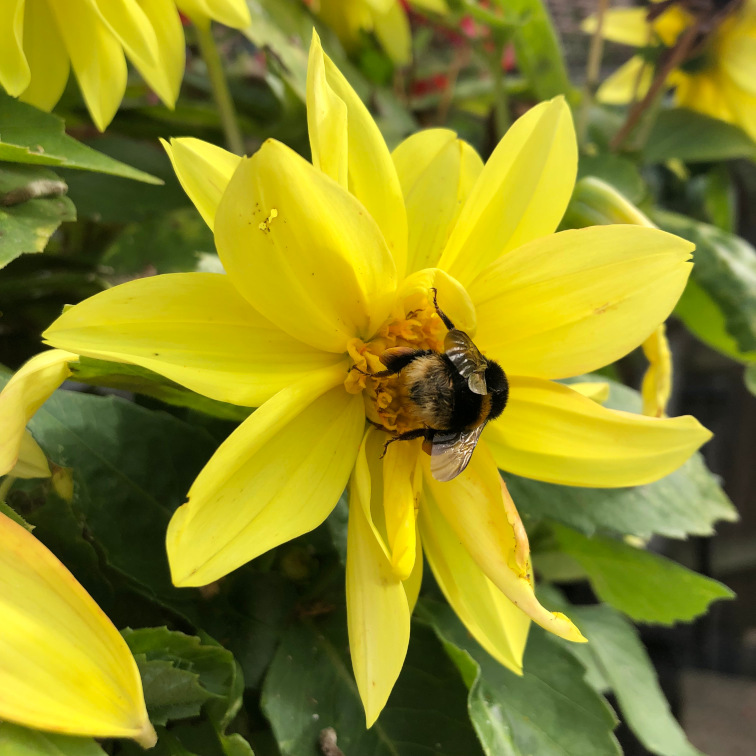As autumn creeps in I do not have the strength, or the breath, to cut back the rather large lavender bush by my front door, which is still attracting bees – as are the few remaining flowers in my back garden (see photo above).
Temperatures are dropping, and fuel bills will rise (we are told), and I have been changing my garden so it can cope with climate change – a problem I have lived with for 60 years. And it is a long story with many ups and downs, and I may not be around long enough to see how it develops.
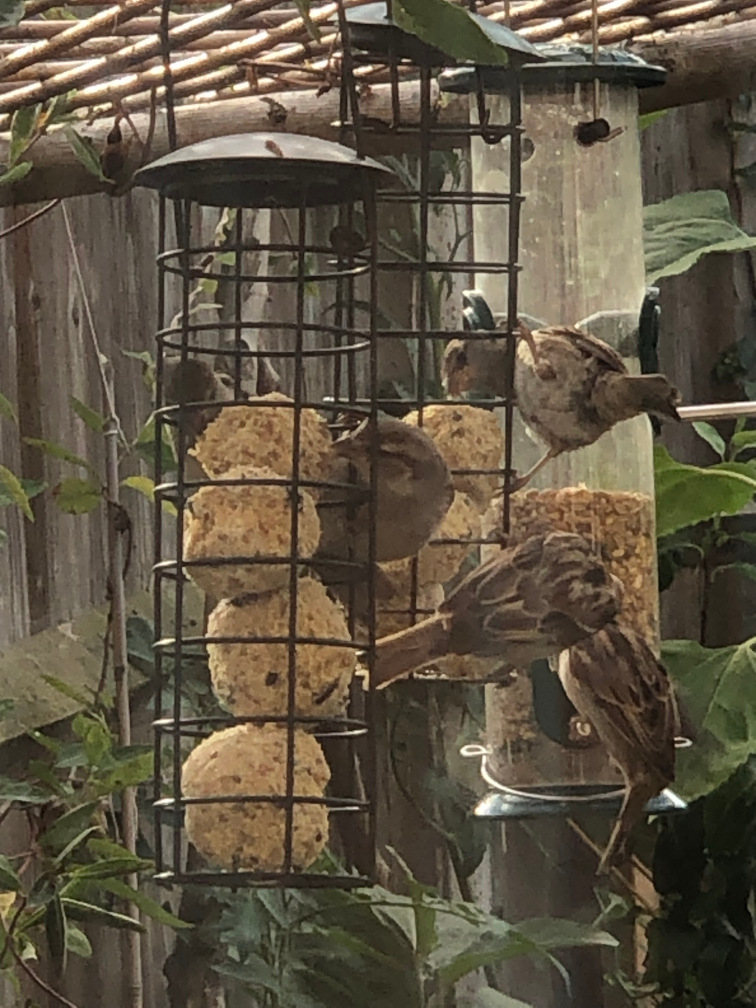
This year however I saw a frog by my brand new pond which promptly disappeared (the frog that is) and I think I saw a mouse disappearing into my compost as I lifted the lid – and there have been masses of birds [shown right]. The cats have been less welcome however as they have decided to fertilise my flower beds, and what used to be called a lawn.
Climate change is nothing new
The high, or low, note of the year (depending on your viewpoint) in my garden however has been the arrival of climate change – with scorching temperatures, a hosepipe ban [see pond photo below], wildfires, and general interference with the growing season – in gardens as well as farms.
And I’ve known about climate change since the 60s when the UN (United Nations) had a sustainable development decade, which was about switching over to agriculture (animals as well as crops) which did not damage the environment.
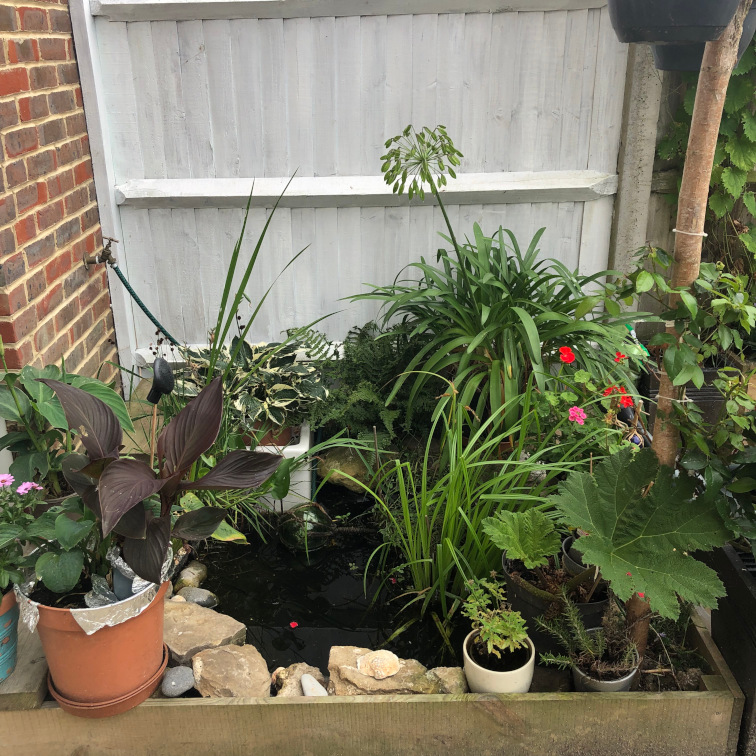
But I was more interested then in volunteering on the university’s student newspaper, and the girls who were there, so I became a journalist. Iin the 60s/70s as a local journalist I lived at first in flats and houses with little in the way of gardens, and I never thought about the climate much.
However the first house I owned was on the edge of the North York Moors overlooking Redcar steel works, a huge chemical works, the start of North Sea oil from Teesside, and the evening newspaper where I worked – and was it windy ! So I got loft insulation, double glazing and cavity wall insulation, and my energy bills went down and down – but my neighbours said: “Why bother ? There’s a lot of oil out there.”
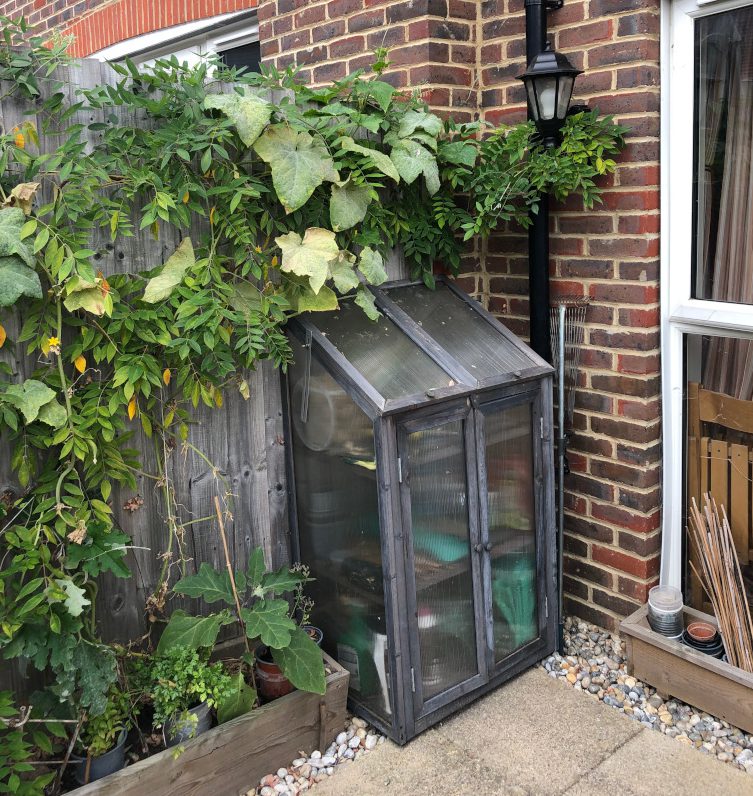
And as a trade union leader in the 70s/80s I did not bother so much, though I did learn to do some gardening (not easy in a London tower block). The insulation was frequently bad in elderly Victorian housing but also in some very recent public housing where the standards (or their delivery) seemed to be low.
Open days for a “green” house
However the first home I “owned” in my second relationship in the 80s was so well insulated that two years running we had open days (organised by some architects) to show it off. Saving water, however, was not on the agenda then – though it should be now (see photo right).
My “home” was “shared ownership” (part mortgaged, part rented until you acquired 100 per cent) with a housing association on old railway land – which meant “insulation incredible, gardening not”. For years railway wagons had leaked on to the ground, and the only things that grew were in tubs! But my little “terrace” behind Kings Cross is now on the market for around a million pounds, I hear.
The house was so well insulated it was “Green” – even if the garden was not. By then, I was working as a civil servant from the 90s (after a brief redundancy in the 80s financial “junk bonds” crash) and, guess what, I was working on climate change issues (by choice) – or a narrow bit called energy efficiency (EE). And the early EE lightbulbs sometimes exploded, sometimes simply failed – and my new partner was not pleased when I brought them home.
Insulation though did not sell as easily as lightbulbs because you can not show it off to neighbours, like the new conservatory; builders often omitted it from their specifications, and actors on screen wearing little clothing suggested that was the norm for householders.
Ganging up with the Gladiators
Despite much marketing and many campaigns (costing millions) , including David Jason and the Gladiators to mention just some featured, people continued not to insulate their homes, though they may do so this winter. However it did provide me with the ammo for a Master’s thesis on marketing that virtually totally failed!
So, moving on to my post-retirement years (exit Whitehall and the Cabinet Office stage right) I bought only brand new houses with 100 per cent insulation, first in Torquay (boring) and then in Rye (livelier).
And I began to switch my lawn over to raised beds, some for flowers and some for vegetables, and added a composter (see below) – and the lawn declined, and this summer means it will shrink further. But I have grown some veg and I hope to grow even more next year (if I’m spared further cancer surgery).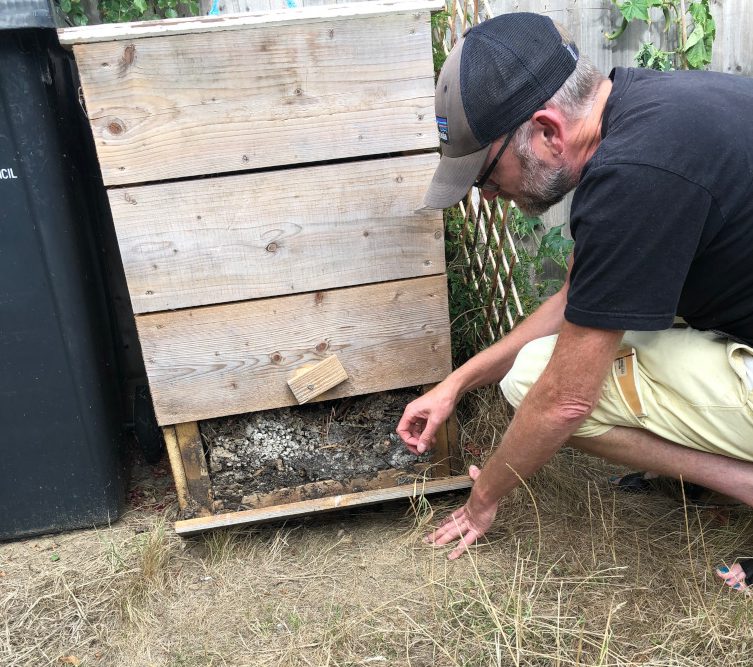
Rent-a-gardener Tim spares time from his bingo duties to check my new composter. But all my insulation should keep my energy bills down, and most houses have some insulation they can install – but far too many have not actually done so.
And my garden will continue to change to provide me with both food and spectacle – even if it is only the fig which looks well set for next year. However my plum did well in its first, brief season and I look forward to planting more things that enjoy the climate change – so perhaps another vine or two in the Spring!
In the meantime though, energy use does contribute to climate change, so better insulation can save you energy – and cash, and possibly we can reverse climate change before it is too late.
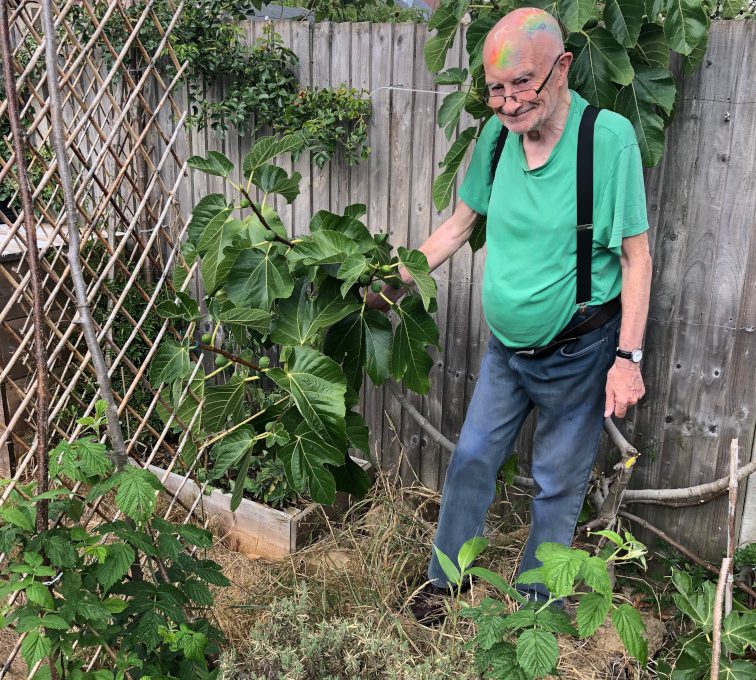
Image Credits: Tim Redfern .



